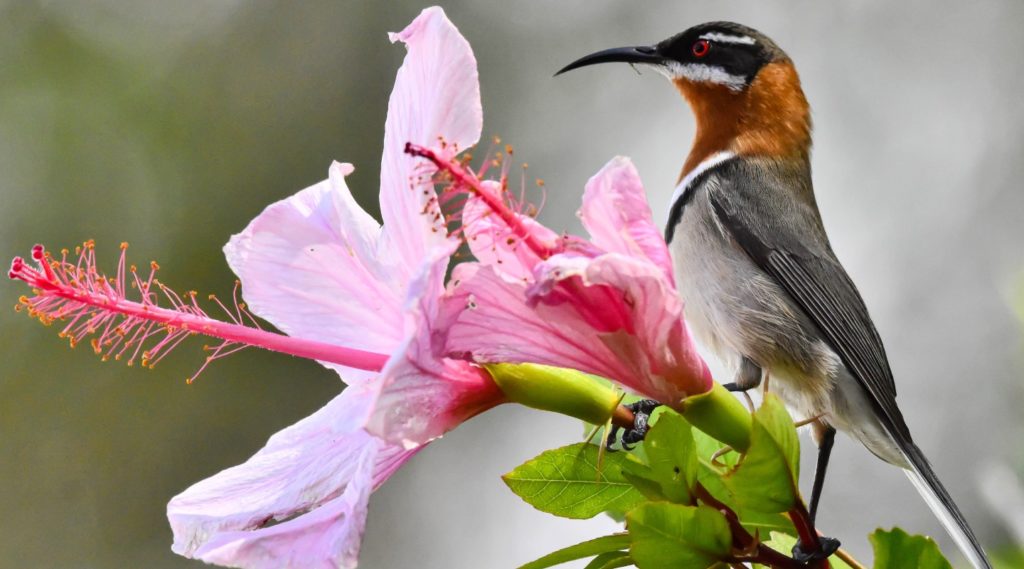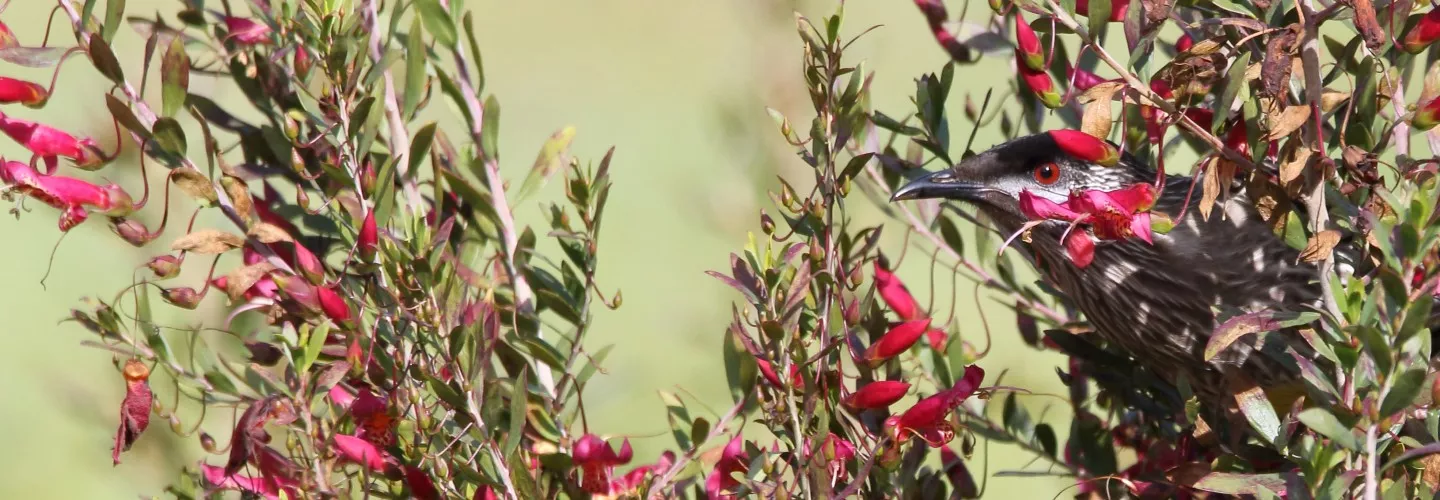How to create a bird-friendly garden
Take stock of what plants you already have
Before you start planning, take into account the plants you already have and which birds are using them. Instead of removing vegetation straight away, add new vegetation to provide some resources that you might otherwise be missing and to attract new birds to your patch. Remember to make sure there is readily available water and plants that flower at different times throughout the year. That way, your local birdlife will never go hungry or thirsty.
Choose native plants
Plants that grow naturally in your area are suited to local conditions. They will provide the right food and shelter for local native birds, unlike some hybrids or plants from other parts of Australia, and are less likely to become weeds in adjacent bushland areas. If you can’t get locally native plants, general natives are the next best thing.
Choose for variety
When selecting plants you don’t want a flush of flowering and then nothing for the rest of the year. Instead you want to have different plants flowering/fruiting/seeding throughout the year so there is always something happening.
Planting a mix of plants that provide these different resources in different seasons will encourage birds to visit throughout the year.
- Insects: Native plants such as Acacia (Wattle), Leptospermum, Kunzea and Tea-tree attract many insects and bugs that are a vital source of protein for birds. You can also mulch your garden to encourage insect life.
- Fruit: Many shrubs and small trees provide berries that ripen at different times, so include seasonal variety like, Blueberry Ash, Lilly Pilly, Midyim berry, Emu Plum.
- Nuts and seeds: Seed-eaters (like finches) generally like dense vegetation to nest, forage and shelter in. Plant grasses next to thick shrubs for an optimal environment. Try Tea-tree, Acacia (Wattle), Lomandra, Themeda (Kangaroo grass), and Poa (Tussock grass).
- Nectar: Honeyeaters (like spinebills) rely on dense vegetation to nest in, as well as to hide from larger, aggressive or carnivorous birds. However, they feed on the nectar of shrubs and trees, like Banksia, Grevillea, Hakea, Melaleuca, and Correa.

Plan your bird habitat
- Create habitat layers and consider the height and width the plants will grow to: Choose a mix of plants that provide a complex vertical structure from the ground up; groundcovers such as grasses or ferns, small shrubs, tall shrubs and a couple of trees (if you have the space). Simple gardens of tall trees and lawn just attract those really common and often aggressive birds. Lots of layers means lots of different places for different birds to use.
- Reduce your lawn: Replace unused lawn areas with garden beds or native grasses which produce attractive seed heads that provide food for finches and other seedeaters such as Rosellas.
- Remember the water: Water can be easily forgotten, but it is an important step in making your garden bird-friendly. Fresh water can be provided in a bird bath, hollowed boulders or a garden pond.
Prepare your garden
Australian native plants have evolved in poor soils and are very sensitive to artificial fertilisers, especially phosphorus. Generally, clay soils are naturally fertile and shouldn’t require any added fertiliser, while sandy soils are low in fertility as nutrients leach out with fast drainage. Only use low-phosphorus fertilizers especially formulated for Australian native plants or mulch instead. Both clay and sandy soil types respond well to thick layers of organic matter used as mulch.
Mulching helps to maintain soil moisture and reduces or eliminates the need to water artificially. In addition, as mulch breaks down, nitrogen and potassium are replenished in sandy soils. Mulch also provides humus (nutrient-rich earth formed when plant or animal material decays), which improves the soil, and can reduce weed growth.
Care for your garden
- Weed: Remove non-native and invasive weeds that may take over.
- Leave the leaves and seeds: mulching all leaf fall and garden cuttings on-site, can easily increase available food for birds.
- Lay off the chemicals: Birds are the best way to keep your plant-eating insects in check. Try not to use sprays and chemicals unless you really have to. Using a chemical may solve one problem but often creates another, such as toxic run-off.
Many local councils provide guides for planting indigenous plants in your garden, which can help attract native birds.
